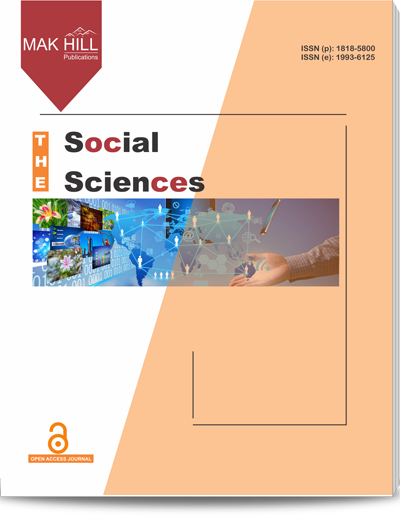
The Social Sciences
ISSN: Online 1993-6125ISSN: Print 1818-5800
100
Views
0
Downloads
Cognitive Factors Related to Cigarettes Smoking among College Students: An Application of Theory of Planned Behavior
Mohammad Mahboubi, Parisa Berimvandi, Behzad Karami Matin, Bahareh Samannezhad, Farzad Jalilian, Hassan Joulaei and Mehdi Mirzaei- Alavijeh
Page: 1189-1193 | Received 21 Sep 2022, Published online: 21 Sep 2022
Full Text Reference XML File PDF File
Abstract
Smoking is one of the main risky factors to develop different types of diseases, especially in relation to non-communicable diseases. The aim of this study was determine prevalence and cognitive factors related to cigarettes smoking based on the theory of planned behavior among students in Kermanshah University of Medical Sciences.This cross-sectional study, conducted among college students in Kermanshah University of Medical Sciences, the West of Iran, a total of 620 students were randomly selected to participate voluntarily in the study. Participants filled out a self-administered questionnaire including the background data and theory of planned behavior constructs. Data were analyzed by SPSS version 21 using bivariate correlations, linear and logistic regression statistical tests at 95% significant level. Almost 11.6% of the participants had a history of smoking. The TPB variables accounted for 38% of the variation in the outcome measure of the intention to cigarette smoking. The best predictors for cigarette smoking was subjective norms with odds ratio estimate of 1.361 (95% CI: 1.223, 1.515) and attitude with odds ratio estimate of 1.041 (95% CI: 1.025, 1.058). Based on the result it seems that designing and implementation of educational programs to reduction positive attitude and subjective norms toward prevention cigarette smoking among college students could be useful result to cigarette smoking prevention.
How to cite this article:
Mohammad Mahboubi, Parisa Berimvandi, Behzad Karami Matin, Bahareh Samannezhad, Farzad Jalilian, Hassan Joulaei and Mehdi Mirzaei- Alavijeh. Cognitive Factors Related to Cigarettes Smoking among College
Students: An Application of Theory of Planned Behavior.
DOI: https://doi.org/10.36478/sscience.2016.1189.1193
URL: https://www.makhillpublications.co/view-article/1818-5800/sscience.2016.1189.1193